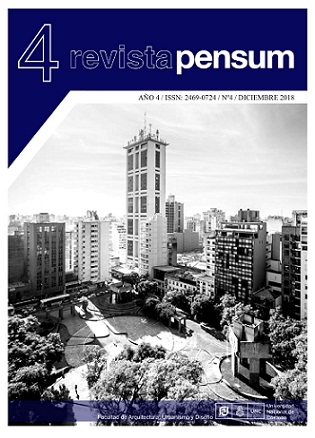Creativity as a vector of development
DOI:
https://doi.org/10.59047/2469.0724.v4.n4.22605Keywords:
Cultural, social and economic creativity, sustainable environmental development.Abstract
In the midst of the redesign of the world and all its systems is witnessing the largest mass movement of people, goods, factories, frantic finances and ideas in history. However, there is still a longing for belonging, distinction and identity that resists the phenomenon enabled by digitalization, which is changing the way we interact with space, place and time. It is in this scenario, where the civic city, the creative community, which tries to find a way through the main failures, dilemmas and potentials of our time: shared lives, inequality, environmental anguish and urban vitality. Creativity is a source of integral development of the territory. Recognize and promote the creative community and its identity value is to ensure the quality of life and sustainable environmental development; cultural, social and economic. This research is aimed at examining the creative cities approach, and the emerging perspective of creative communities. The coexistence of both trends and their implications for the improvement of the quality of life and in the construction of urban environmental sustainability is discussed.References
Castells, M. (1996) La era de la información. En: Economía, sociedad y cultura. Vol. 1 siglo XXI 1996. México DF.
CNCA (2014) Mapeo de las industrias creativas en Chile: caracterización y dimensionamiento. Publicaciones Cultura. Consejo Nacional de la cultura y de las artes. Santiago. http://www.cultura.gob.cl/wp-content/uploads/2014/01/mapeo_industrias_creativas.pdf
CORFO (2016) Programa estratégico nacional Economía creativa (Presentación a CPIE)
https://docs.wixstatic.com/ugd/443771_a20de9a528704a21ab87d97f1f1a606b.pdf
CORFO (2016a) Programa estratégico Valparaíso ciudad creativa innovadora sustentable. Hoja de Ruta: https://drive.google.com/file/d/0B_x1ho2AoMZ7WVlDb3k4UHRyM1k/view
CORFO (2016b) Valparaíso ciudad creativa innovadora sustentable. Resumen Ejecutivo http://www.chiletransforma.cl/wpcontent/uploads/2017/08/RESUMEN_EJECUTIVO_HDR_2JUNIO.pdf
CORFO (2017) Chile creativo: ideas que valen, Informe 2016- 2017. CORFO Transforma. https://docs.wixstatic.com/ugd/443771_0b19d4dbbf0a4e9c8cbf9c6524ebc47e.pdf
CORFO, Estratégica (2015): Diagnóstico y caracterización de la economía creativa: brechas y drivers de los 4 subsectores priorizados y la gobernanza de los esfuerzos públicos.
CORFO (2017a) Programa estratégico Valdivia innovadora, sustentable y creativa. http://www.chiletransforma.cl/wp-content/uploads/2017/08/ResumenEjecutivoPER-VISCv6GOC.pdf
Florida, R. (2005) Cities and the Creative Class. Routledge.
Florida, R. (2005a) The Flight of the Creative Class. The New Global Competition for Talent. HarperBusiness, HarperCollins.
Florida, R. (2017) The New Urban Crisis: How Our Cities Are Increasing Inequality, Deepening Segregation, and Failing the Middle Class—and What We Can Do About It, 2017. Basic Books.
Gadamer, H. (1991) La actualidad de lo bello. Paidós Ibérica.
Gehl, J. (2015) Städte für Menschen, JOVIS Verlag, Berlin.
Harvey, D. (1998) La condición de la posmodernidad. Investigacíón sobre los orígenes del cambio cultural. Amorrortu editores, Buenos Aires.
Hermansen, C. (2012) Arquitectura y Creatividad. En: Revista Diseña 4. PUCCH. http://www.revistadisena.com/arquitectura-y-creatividad/
Herrera-Medina, E.; Bonilla-Estévez, H.; Molina-Prieto, L. (2013) Ciudades creativas: ¿paradigma económico para el diseño y la planeación urbana? En: Revista Bitácora Urbano Territorial [en linea] 22: Disponible en: <http://www.redalyc.org/articulo.oa?id=74829048002> [consulta: 17 de julio de 2018]
Landry, Ch. (2017) The Civic City in a Nomadic World. NAi Uitgevers / Publishers Stichting
Lefebvre, H. (1969) El derecho a la ciudad, Barcelona: Peninsula [edición original: (1968) Le Droit à la ville, Paris: Anthropos].
Markusen, A. (2006) Urban Development and the Politics of a Creative Class: Evidence from a Study of Artists. Research Article Volume: 38 issue: 10, page(s): 1921-1940 https://doi.org/10.1068/a38179
PNUD (2014) Plan de Recuperación Post Desastre y Transición al Desarrollo de la comuna de Valparaíso, desde un enfoque participativo y de reducción del riesgo de desastres.
UNCTAD (2008) Economias creativas reporte 2008.
UNESCO (2016) Conclusions: X Annual meeting of the UNESCO Creative Cities Network, Ostersund, Jamtland Harjedalen, Sweden, 16 September 2016.
UNESCO (2017) Cultura Futuro Urbano: informe mundial sobre la cultura para el desarrollo urbano sostenible, http://unesdoc.unesco.org/images/0024/002462/246291s.pdf
Downloads
Published
Issue
Section
License
Copyright (c) 2018 Myriam Ximena Araya-Schübelin

This work is licensed under a Creative Commons Attribution-ShareAlike 4.0 International License.
Authors who publish in this journal agree to the following terms:
a. Authors retain copyright and guarantee to the journal the right to be the first publication of the work as well as licensed under a Creative Commons Attribution-ShareAlike 4 license.
b. Authors may separately establish additional agreements for non-exclusive distribution of the version of the work published in the journal (e.g., placing it in an institutional repository or publishing it in a book), with an acknowledgement of its initial publication in this journal.
c. Authors are permitted and encouraged to disseminate their work electronically (e.g., in institutional repositories or on their own website) before and during the submission process, as this may result in productive exchanges, as well as earlier and greater citation of published work (See The Effect of Open Access).
d. 4.0 International Creative Commons Attribution-ShareAlike 4.0 License.












